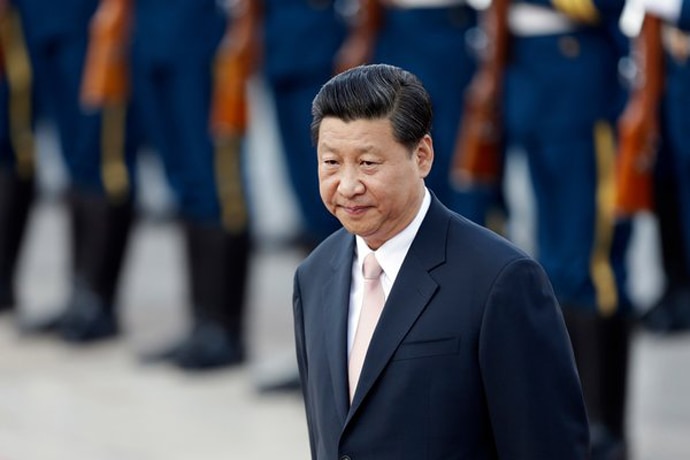Doklam standoff: Has India proved it can't stand up to China's psywar?

The current troop standoff at the Tibet-Bhutan-Sikkim trijunction has revealed how China combines psychological warfare ("psywar"), media warfare and the manipulation of legal arguments ("lawfare") to undermine its opponent's information-control capabilities and to buttress its strategic game plan. Disinformation and deceit are among the tools China is employing in its psywar to tame India without military combat, in Sun Tzu style.
Crisis
The current crisis, on the other hand, has shown India as ill-prepared to counter China's psywar, especially its disinformation operations. This has partly to do with India's traditionally defensive strategic mindset.
Prime Minister Narendra Modi's government has also done little to improve public relations and media outreach. Blending toughness, savvy, single-mindedness and deft propaganda, China has mounted intense psychological operations (psy-ops), including almost daily threats to teach India a lesson, unless it gives in. China's warmongering has become so shrill and coarse that, to the casual observer, a Himalayan military conflict may seem imminent.
In reality, the crisis has highlighted the centrality of propaganda in China's foreign policy - from the aggressor playing the victim to continuing Chinese efforts to camouflage the People's Liberation Army intrusion into tiny Bhutan, an action that precipitated the standoff. Indeed, the powerful, highly centralised authoritarian regime in Beijing has shown itself adept at exploiting the political divisions in the world's largest democracy, including reaching out to Modi's opponents, including Rahul Gandhi, and attacking his "Hindu nationalism" in order to help sow dissensions in India on its current China approach.
China's vitriolic war rhetoric and unrealistic preconditions for holding talks stand out in stark contrast to India's measured response and emphasis on diplomacy and dialogue to end the standoff. The US has implicitly supported India's stance by similarly calling for a dialogue to peacefully resolve the crisis.
China's psywar against a raucous democracy with poor PR raises a key question: What is Beijing hoping to accomplish? Take its foreign ministry, which is probably the weakest government branch, given China's rise as a praetorian state. Yet that ministry has taken the lead to intimidate India in unbecoming and undiplomatic language. Beijing is also using its state media to threaten an "all out confrontation" along the entire, more than 4,000km-long Sino-Indian border and to warn India that it would suffer a humiliating rout greater than it did in the 1962 war.
One Chinese state mouthpiece even called the Indian external affairs minister a liar. The current crisis has shown that Chinese propaganda is getting smarter and more targeted, with some in the Indian media lapping up the disinformation, yet Beijing's deception and mendacity are also becoming conspicuous. Consider two examples.

Telecast
In mid-July, the Chinese state broadcaster CCTV telecast a video of live-fire military exercises in Tibet by a mountain brigade deployed against India. It later came to light that this was a routine annual drill conducted much before the crisis began. Shortly after the CCTV report, the Chinese military's official newspaper, PLA Daily, said tens of thousands of tons of military hardware had been moved to Tibet in response to the troop standoff.
This report too turned out to be part of China's psywar, with Indian intelligence still finding no evidence of a Chinese military build-up in Tibet. China's psywar, after its initial success in dominating the narrative, has failed to obscure the key facts about the standoff. If anything, its psy-ops offer India important lessons, including how a clever China feeds disinformation and manipulates even the Indian media. It is standard Chinese strategy to play the victim in any conflict or dispute. It did the same even when it carried out the 1962 trans Himalayan invasion.
Conflict
The risk that a frustrated China could escalate its current psywar to a military conflict cannot be discounted. Indeed, Beijing is signalling that it will brook no Indian "interference" in Bhutan's affairs, although Indo-Bhutanese relations are governed by a friendship treaty and defence arrangements. It wants India to leave Bhutan to its fate.
More fundamentally, China's intrusion into Bhutan and its war rhetoric against India raise two important larger issues. One issue is China's disregard of international law, including the bilateral accords it has signed with Bhutan and India pledging not to alter the status quo unilaterally. As the South and East China seas also illustrate, Beijing signs agreements and treaties but does not comply with them.
Another issue is China's abiding faith in propaganda, extending from fake history claims to the territories of other nations to disinformation operations intended to deceive and outmanoeuvre opponents. The reliance on propaganda blurs the line between fact and fiction to such an extent that, gradually, the Chinese state begins to believe its own propaganda and act upon it. This factor, along with its associated risks, is apparent in the Doklam standoff.
As for India, it needs to recognise that while caution is prudent, diffidence tends to embolden the aggressor. It should continue to err on the side of caution but must shed its diffidence and develop a strategy to deal with China's psywar capabilities. The Doklam standoff could represent a defining moment for India.
(Courtesy of Mail Today.)

